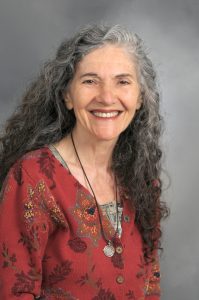By Mallie Jane Kim
Port Jefferson Village is a North Shore gem for locals and visitors alike, with restaurants and shops a cornerstone of this historic district experience. For decades, Barbara Ransome, 16-year director of operations for the Greater Port Jefferson Chamber of Commerce, has worked tirelessly and effectively to keep this charming corner of Long Island thriving.
“Barbara is a force of nature,” said Stuart Vincent, president of the chamber and senior community relations program manager at Mather Hospital.
Vincent praised Ransome’s ability to organize complicated logistics of village events, and to make sure everything the chamber hosts — from the Health and Wellness festival to the Santa parade — is successful. She also keeps abreast of any new regulation or change that might impact local business, attending countless relevant meetings to keep chamber partners informed. She even dresses as the Easter Bunny for Port Jefferson’s Easter parade and egg hunt.
“Barbara’s all over,” Vincent said. “I wonder sometimes how she gets everything done in the day.”
Ransome, who also owns and operates The Ransome Inn on East Broadway, has brought to the village events like the Dragon Boat Race Festival, the Chowder Crawl during Oktoberfest and the Mac & Cheese Crawl during the village Ice Festival — all features that add to the tangible sense of place in Port Jefferson while drawing more customers to local retail shops and restaurants.
Her presence has added to a sense of unity among village community leaders as well. According to Lobster House owner James Luciano, who is also president of the Port Jefferson Business Improvement District (BID), Ransome goes above and beyond to volunteer her time to help.
“If there’s a chamber partner out there who needs help, she’s there,” Luciano said. “Any time I need help with anything, she’s always the first one asking, ‘What do you need?’”
Ransome served six terms in local elected positions, including as village trustee and deputy mayor, so she has a deep understanding of how the system works, and she is adept at helping business owners navigate bureaucracy.
Luciano added that she has been an invaluable partner for other organizations looking to serve the village, including the Business Improvement District.
“The chamber and the BID used to be very separate years ago, and now they’re very much one and the same,” Luciano said, describing the tight relationship his organization has formed with the Chamber of Commerce. “Having someone as committed as her is what really makes it happen.”
For Ransome herself, keeping the chamber running springs naturally from her personality and her long history in the village.
“I do like to work,” she said. “My motivation is to make sure that things are done correctly and the chamber as a whole benefits.”
Ransome also credits her success to having a board that trusts and supports her, due to her reputation for doing the right thing.
“There’s an expression in the horticultural community of a ‘proven winner,’” she said, referring to plants that have a track record of success. “I think that’s what I am for them — I’m a proven winner in doing the job here.”
For her unflagging commitment to the continued success of Port Jefferson Village, TBR News Media recognizes Barbara Ransome as a 2024 Person of the Year.






























